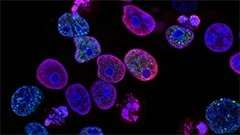Introduction
Drug metabolism, also known as pharmacokinetics, is a crucial aspect of pharmacology and toxicology that focuses on the fate of drugs within an organism. This process involves the biotransformation of drugs by enzymes in various tissues, particularly the liver, to render them more soluble for excretion or less toxic. The understanding of drug metabolism is essential for predicting the effects of a drug on the body, optimizing therapeutic efficacy, and minimizing adverse reactions.
Historical Perspective
The study of drug metabolism has its roots in ancient times when humans began using plants and other substances for medicinal purposes. However, it was not until the 19th century that the concept of drug metabolism emerged with the discovery of enzymes and their role in biochemical reactions. The development of chromatography techniques in the mid-20th century allowed for the identification and quantification of drug metabolites, leading to significant advancements in this field.
Importance of Drug Metabolism
Drug metabolism plays a vital role in determining the pharmacokinetic profile of a drug, including its absorption, distribution, metabolism, and excretion (ADME). By understanding the mechanisms involved in drug metabolism, scientists can predict how a drug will behave in the body, optimize dosage regimens, and design drugs that are more effective and safer.
Overview of Drug Metabolism Processes
Drug metabolism primarily occurs in the liver through two main processes: phase I reactions and phase II reactions. Phase I reactions involve the oxidation, reduction, or hydrolysis of a drug by enzymes such as cytochrome P450 (CYP450). Phase II reactions involve the conjugation of a drug with an endogenous molecule, such as glucuronic acid or sulfate, to form a more water-soluble metabolite that can be excreted from the body.
Phase I Reactions
Cytochrome P450 Enzymes
Cytochrome P450 (CYP450) is a superfamily of heme-thiolate proteins that catalyze various oxidation reactions. These enzymes are located in the endoplasmic reticulum of liver cells and play a crucial role in drug metabolism. CYP450 enzymes can be induced or inhibited by certain drugs, which can affect their pharmacokinetics and toxicity.
Oxidation Reactions
Oxidation reactions are the most common phase I reactions for drug metabolism. These reactions involve the transfer of electrons from the drug to molecular oxygen, forming a hydroxyl group (-OH) on the drug molecule. This process can lead to detoxification or activation of drugs, depending on the specific drug and its biological effects.
Reduction Reactions
Reduction reactions are less common than oxidation reactions but still play an essential role in drug metabolism. These reactions involve the transfer of electrons from a reducing agent to a drug molecule, typically resulting in the reduction of a functional group such as a ketone or aldehyde. Reduction reactions can also lead to detoxification or activation of drugs.
Phase II Reactions
Conjugation Reactions
Phase II reactions are conjugation reactions that involve the attachment of an endogenous molecule, such as glucuronic acid, sulfate, glycine, or methionine, to a drug molecule. These reactions render the drug more water-soluble and facilitate its excretion from the body. The most common conjugation reactions are glucuronidation, sulfation, and methylation.
Glucuronidation
Glucuronidation is the most prevalent phase II reaction for drug metabolism. In this reaction, a glucuronic acid molecule is attached to a hydroxyl group (-OH) on the drug molecule, forming a glucuronide conjugate. Glucuronides are polar and highly water-soluble, making them easily excreted from the body.
Sulfation
Sulfation is another common phase II reaction for drug metabolism. In this reaction, a sulfate group (-SO3-) is attached to a hydroxyl or amino group on the drug molecule, forming a sulfate conjugate. Sulfates are also polar and water-soluble, facilitating their excretion from the body.
Factors Affecting Drug Metabolism
Several factors can influence the rate and extent of drug metabolism, including age, gender, genetics, diet, and disease states. Understanding these factors is essential for optimizing drug therapy and minimizing adverse reactions.
Age
Age can significantly affect drug metabolism. Infants and children have lower levels of certain enzymes, such as CYP3A4, compared to adults. Conversely, the activity of some enzymes may decrease with age, leading to slower drug metabolism in the elderly.
Gender
Gender can also influence drug metabolism due to differences in body composition and hormonal levels. Women generally have a higher percentage of fat tissue compared to men, which can affect the distribution and metabolism of lipophilic drugs. In addition, hormonal fluctuations during pregnancy or menstruation can affect enzyme activity, potentially affecting drug metabolism.
Genetics
Genetic variations in enzymes involved in drug metabolism can lead to differences in the rate and extent of drug metabolism among individuals. For example, polymorphisms in the CYP2D6 gene can result in poor or ultra-rapid metabolism of certain drugs, leading to subtherapeutic or toxic effects.
Diet
Diet can affect drug metabolism by influencing enzyme activity and substrate availability. For example, foods rich in flavonoids or other plant compounds can inhibit CYP450 enzymes, while a high-fat diet can increase the absorption of lipophilic drugs.
Disease States
Certain disease states can affect drug metabolism by altering enzyme activity or reducing organ function. For example, liver cirrhosis can reduce the activity of CYP450 enzymes and impair drug metabolism, while kidney disease can affect drug excretion.
Clinical Implications of Drug Metabolism
Understanding drug metabolism is essential for optimizing drug therapy and minimizing adverse reactions. By predicting the pharmacokinetic profile of a drug based on its metabolic pathways, clinicians can tailor dosage regimens to individual patients and minimize toxicity. In addition, understanding drug metabolism can help identify potential drug interactions, such as when two drugs compete for the same enzyme or when one drug inhibits another's metabolism.
Conclusion
Drug metabolism is a critical aspect of pharmacology and toxicology that focuses on the fate of drugs within an organism. The understanding of drug metabolism allows for the optimization of therapeutic efficacy, minimization of adverse reactions, and prediction of drug behavior in the body. By studying the enzymes involved in drug metabolism, the mechanisms of phase I and phase II reactions, and the factors affecting drug metabolism, we can gain valuable insights into this essential area of biochemistry.
MCQ: Test your knowledge!
Do you think you know everything about this course? Don't fall into the traps, train with MCQs! eBiologie has hundreds of questions to help you master this subject.
These courses might interest you
Create a free account to receive courses, MCQs, and advice to succeed in your studies!
eBiologie offers several eBooks containing MCQ series (5 booklets available free for each subscriber).



